Self Regulation IEP Goals
Self regulation is a critical life skill that many students struggle to achieve. Individuals with poor self regulation skills can find it difficult to complete independent tasks, focus in class, and manage their emotions. If your student has difficulty with self regulation, consider adding a self regulation IEP goals related to this skill. There are many strategies that can help students improve their self regulation skills, and setting specific goals can help ensure that your child makes progress.
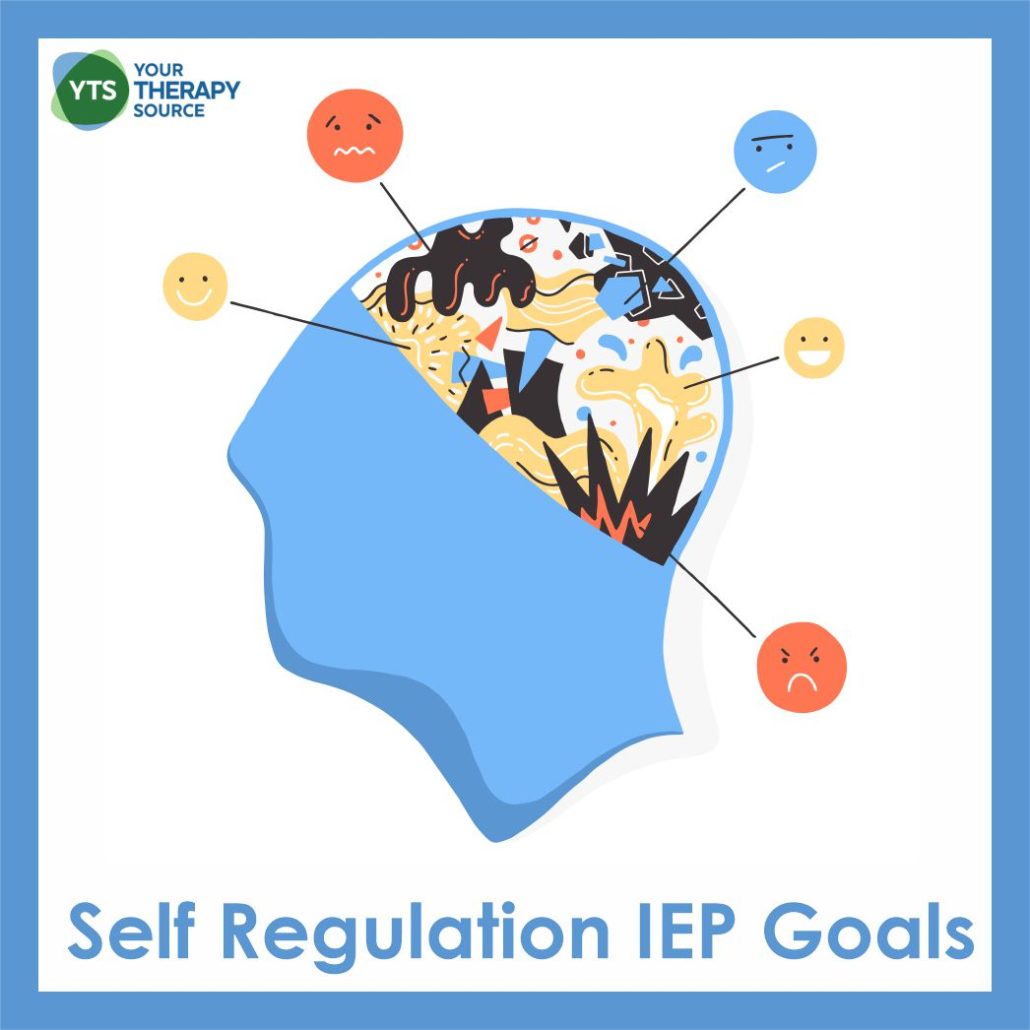
Self-regulation is important for all students, but especially those with an IEP. Teaching your child how to regulate their emotions and behavior can help them succeed in school and life. Learn more about what self-regulation is, why it’s important, and how you can help your child achieve their IEP goals related to self-regulation.
What is a Self-Regulation Goal?
A self-regulation IEP goal is a measurable objective that focuses on helping your student or child learn how to regulate their emotions and behavior. Self regulation skills are important for all students, but they can be especially difficult for children with disabilities like ADHD, autism spectrum disorder (ASD), or emotional disturbance (ED). There are many strategies and techniques you can use to help your child improve their self regulation skills and complete tasks.
Self-regulation is an especially important IEP goal for students with ADHD or ASD, and it’s often included in the target goals of other disabilities. Students with poor regulation skills can have difficulty completing class work, making good choices, interacting with peers, and managing their emotions. If your child struggles with self regulation, it can have a negative impact on their education and social development.
The Importance of Self-Regulation IEP Goals
As stated, self-regulation is an especially important skill for students with disabilities that affect executive functions like ADHD or ASD. Executive functions are important mental skills that help your child manage their attention, memory, language comprehension, and problem solving skills. Some of the most important executive functions are inhibition, working memory, planning, and cognitive flexibility (the ability to switch between tasks).
Self-regulation is closely related to these mental processes. It’s essentially about controlling your body’s actions (inhibition), holding information in your mind (working memory), thinking strategically (planning), and switching between tasks (cognitive flexibility). Unfortunately, many students struggle with these skills.
If your child has difficulties with self-regulation, it can affect their performance in school and their social skills. By setting goals to improve self-regulation , you can help them achieve success and work toward a brighter future.
Why Self Regulation is Important for Students with ADD/ADHD
Many students with ADHD have issues regulating their behavior, which can make it difficult to focus in class or complete tasks. Typical interventions that help children with ADHD focus are often the opposite of what the child needs to regulate themselves. For example, if your child is acting out because they’re hyper, trying to decrease their energy will probably make things worse.
Instead, you must establish a treatment approach that helps your students to make the correct judgments about their actions. For example, one self-regulation IEP goal could help your child understand what kinds of tasks are appropriate for certain settings. If they’re an active student, it’s important to keep them moving during class, but they should probably sit down during a test.
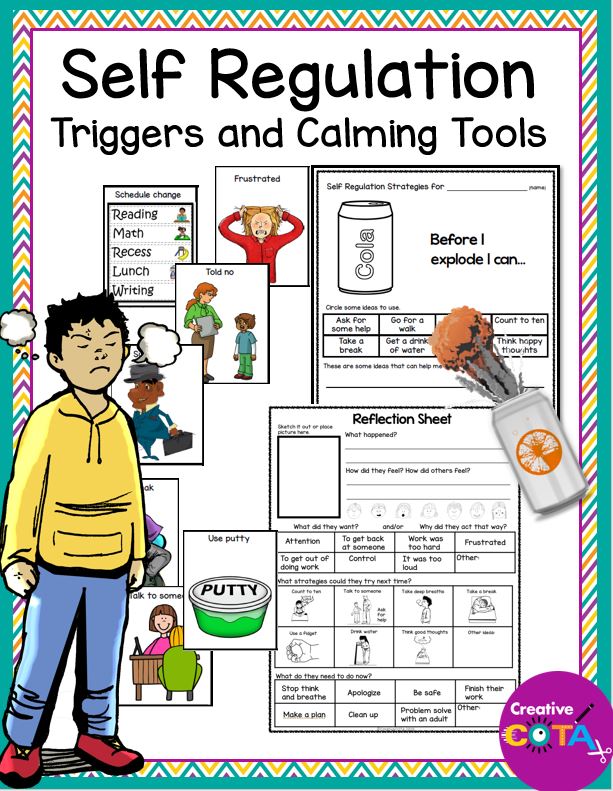
Self Regulation Triggers and Calming Tools
Setting up Appropriate Goals for Self Regulation
You can set any self-regulation IEP goal, but it’s important to consider your child’s specific needs. There are several areas you might focus on including time management skills, ability to transition between tasks, understanding the effects of different behaviors, or self-management skills.
Setting up a goal to improve time management skills is important for students so they know how long it will take them to complete certain tasks.
Making transitions between different tasks is another important area that’s included in many IEPs. This includes emotional and self regulation skills when going from the playground to the classroom, or making a transition from math to science class.
Understanding how different behaviors affect other people is also a key self-regulation skill. If your child struggles with this area, it can have a negative impact on their education and social development. For example, if your child hits their peers when they’re angry, it would be beneficial to help them learn to self-calm or ask for help.
Self-monitoring is another important skill that many students with disabilities need help with. If your child isn’t able to determine whether they’re acting appropriately, it can make it impossible for them to complete tasks successfully.
Self-monitoring skills can also help your child understand how their behavior might affect other people. Using self-monitoring checklists is an excellent strategy to help students who struggle in this area.
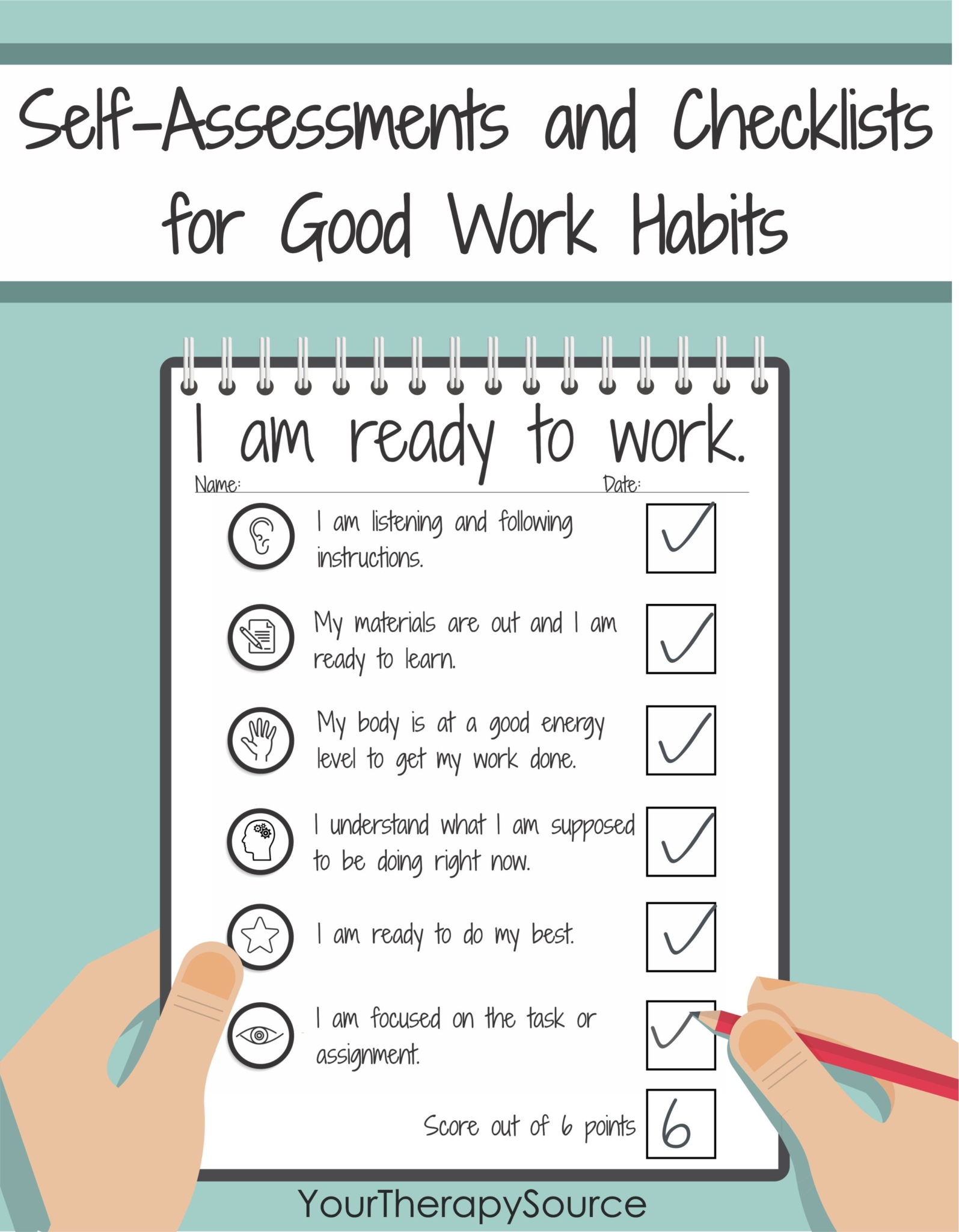
Self-Assessments and Checklists for Good Work Habits
Becoming Aware of Behaviors that Interfere with Self Regulation
One key component of self-regulation is being aware of the reactions and thoughts of others, which includes taking turns during a conversation, understanding body language, learning appropriate coping strategies, and identifying social cues.
The first step to helping a child with self-regulation is to identify behaviors that interfere with their ability to work and play well with others on a daily basis. If your child has a difficult time completing a task because they can’t sit still, or getting through the school day without having a major meltdown, those are some good indicators that your child needs help with self-regulation.
Self Awareness and Judgments
It’s also important to teach students about their own thoughts and feelings, which is closely tied to self-awareness and emotional regulation. Kids learn to understand what kinds of judgments they might make about themselves or others based on different behaviors.
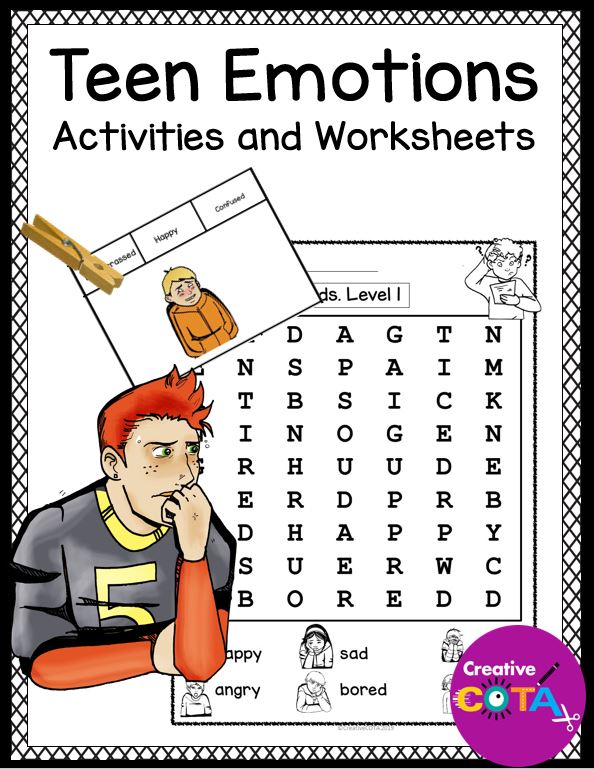
Emotional Intelligence Activities for Teens
Working on Self-Regulation Skills Over Time
One of the difficulties of working on self-regulation is that it takes a lot of time and practice. If your child isn’t able to regulate their own behavior, over the course of the school year they need to learn new skills that help them understand how to interact with other people.
Each child learns at a different pace, so you might need to work with your student or child more or less depending on their abilities. Don’t be discouraged if they don’t learn new skills right away. It can take several weeks before they feel comfortable trying self-regulation in different environments.
Self Regulation is an Important Skill for Everyone
If you have a child with self-regulation difficulties, it can be challenging to meet their needs at school or in the community. For example, one important things for people on the autism spectrum is learning how to socialize and interact successfully with other people. Self regulation skills are an important part of that process. It’s never too late to start making changes that will help your child. Special education teachers, school psychologists, occupational therapists, and other school staff can help students reach new goals whether physical. social-emotional goals or academic goals.
Self Regulation is a key skill for everyone, and teaching it can be challenging at times, but some students may need extra assistance to make sure they learn how to self regulate in all areas. Read more on self regulation examples here.
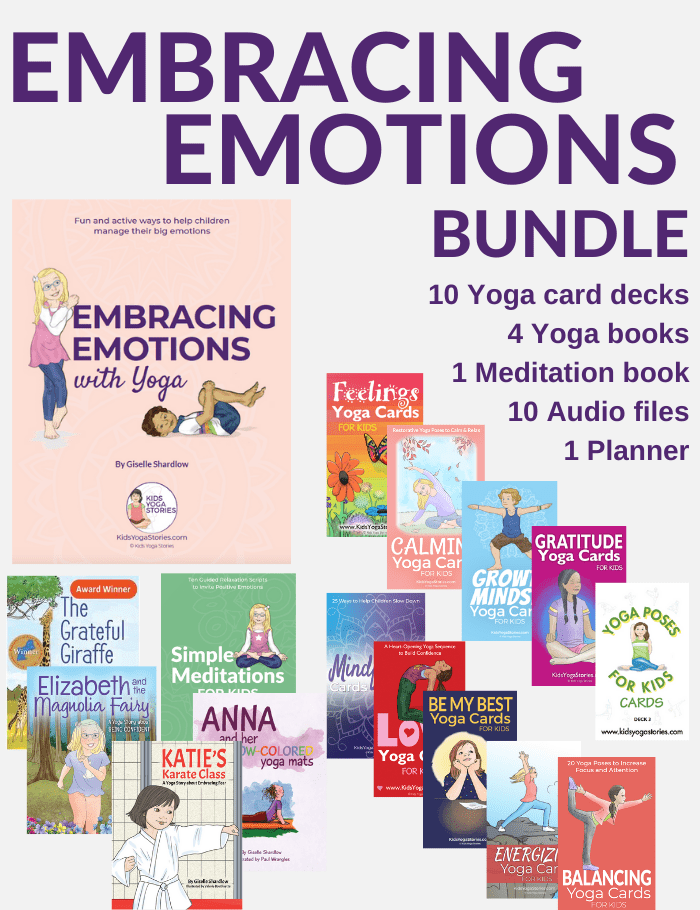
Emotional Regulation Activities for Kids – Yoga Bundle
How Do You Write Self Regulation IEP Goals?
Self-regulation refers to appropriate behavior related to any activity. For example, if a student is able to sit appropriately at their desk during broadened learning activities for 20 minutes without needing reminders or prompts from the teacher, this would be an appropriate self-regulatory behavior.
Self-regulation IEP goals provide measurable evidence of what your child needs to show they have mastered. In this case for data collection, the goal would be to have your child sit for 20 minutes at a time without needing reminders from his teacher during broadened learning activities.
It is important that self-regulation goals are age appropriate and tailored to fit your child’s individual needs. Desired levels of performance will vary depending on the student’s abilities, specific disabilities, classroom setting, teacher support, and academic grade levels.
Sometimes students with disabilities do not meet self-regulation IEP goals because they need special accommodations or modifications in order to succeed. For example, your child might only be able to work on writing assignments for 5 minutes before needing a movement break due to sensory processing issues. If the goal is set too high, the child will not be able to meet it by themselves. The movement break would be a special accommodation for that student.
Write Specific, Positive, Self Regulation Goals
A self-regulation IEP goal should be specific and positive so that it is clear what behaviors your child needs to show more of, rather than less of. A common mistake when writing self-regulation goals is focusing on the undesired behavior instead of desired behavior. For example, “Sam will not be loud when playing in the block center for 10 minutes” is not a positive, specific, self-regulation goal because it does not specify what behaviors Sam needs to show more of. A better way to write this goal would be “Sam will independently work in the block center for 10 minutes without needing any prompts from his teacher.”
Be sure to take the time to determine the student’s present level of performance when it comes to self regulation skills. Are weaknesses present such as impulsive behavior or decreased self-regulation skills during stressful situations? Best practice includes data collection to determine these areas of weakness.
Self-regulation may be difficult for some children to practice in the classroom due to factors such as distractions if there is too much going on, or when everyone else in the class is misbehaving. Self-regulation IEP goals will include how your child would respond when faced with these types of situations. For example: “When his teacher is busy attending to the whole class, Tom will continue working independently in his workbook for 5 minutes without needing any prompts from her.”
The next step when writing self-regulation IEP goals is choosing the appropriate levels of performance. Levels of performance refer to how well your child must perform in order to succeed at that goal. This includes talking about what your child can already do, what they have difficulty doing and what they will be able to do at the end of the goal.
Finally, it’s important to think about your child’s progress towards meeting self-regulation goals on a regular basis. If your child is not meeting their goals or regressing in their ability to meet them, you should consider different ways to meet the goal or consult your doctor or school team to create more appropriate goals for their needs.
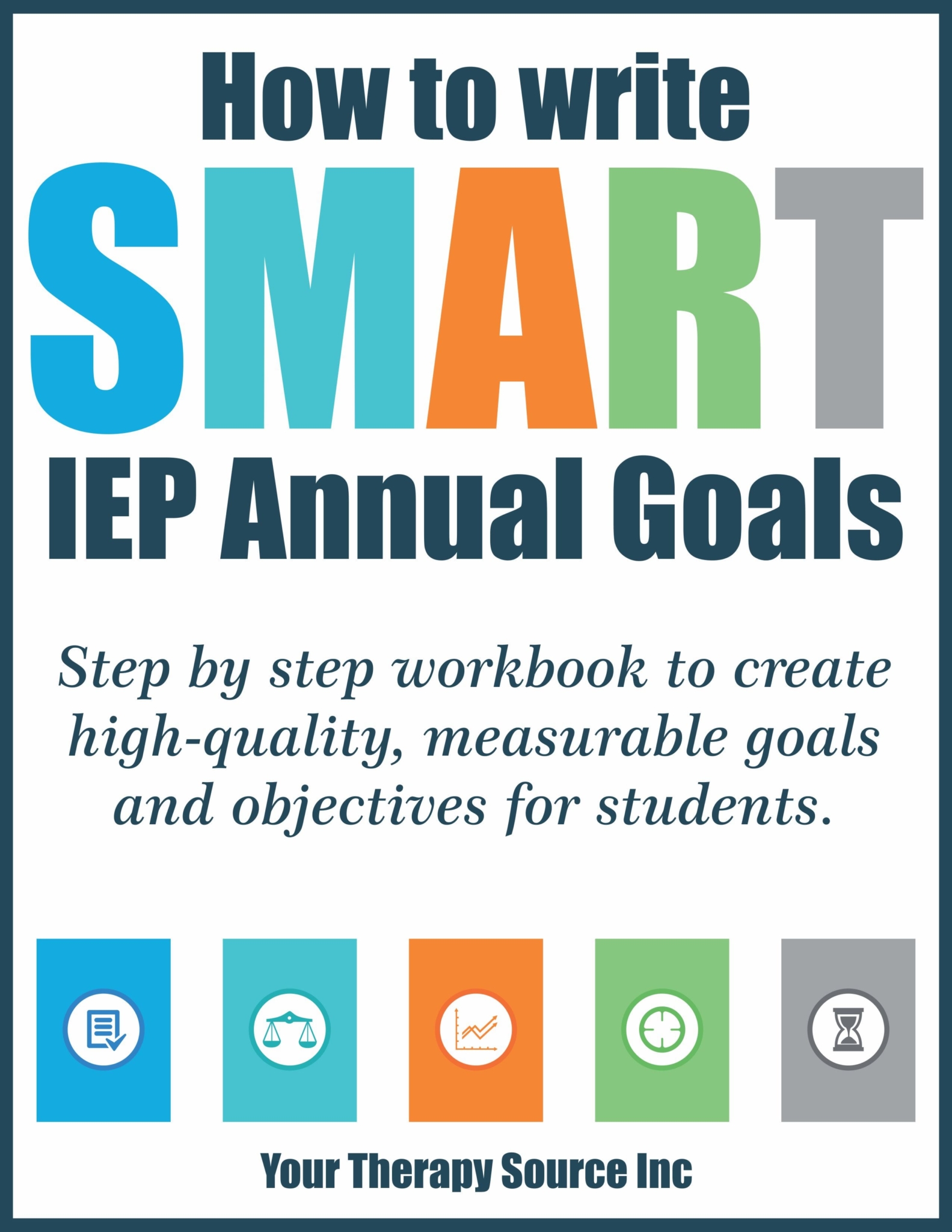
How to Write IEP Goals Workbook
Examples of SMART Self Regulation IEP Goals
SMART self regulation IEP goals are specific, measurable, achievable, relevant, and timely. Keep in mind ALL goals should be individualized for each student. It is also important to write functional goals for the annual goal. Here are some examples of SMART goals to help spark ideas for your students:
- Tommy will independently play in the block center for 15 minutes without needing any adult prompts.
- Sarah will sit down during guided reading time instead of getting up and walking around her chair 4 times per session.
- Billy will increase his number of appropriate behavior choices by going to a calm-down spot or using deep breathing exercises at least 3 times per session after he becomes frustrated.
- Jim will stay on task for 5 minutes for an assignment before choosing preferred tasks 80% of the time.
- Without teacher prompts, Maggie will stay seated and appropriately play with the musical instrument for 5 minutes without needing to take a break.
- At circle time, Rebecca will wait for her turn to hold the stuffed animal instead of reaching across the table during several rotations per session.
- Jackson will choose to re-join his classmates in a small group setting within 5 seconds after being redirected 2 times per session.
- Once Jamie finishes his daily assignment, he will independently clean up his materials without prompting from his teacher.
- At recess, Dawn will engage in 1 whole minute of play time with peers before moving onto other students’ games.
- Rosa will increase her time on task by independently completing 1 page in the workbook during quiet reading time per session.
- Heath will use positive self-talk to independently complete small but difficult tasks in science class.
- Nathan will decrease his off-task behavior by staying seated and working quietly at least 80% of the time during small group instruction.
- During recess, Tyler will independently join 1 or more students with whom he will play for at least 3 minutes without needing any prompts from his teacher.
- Lily will maintain appropriate personal space from her peers during physical education class without a verbal cue from adults or peers 80% of the time.
Need More Help with IEP Goal Writing?
We all want our children to succeed in school and throughout their lives. One way for students to continue on the path of success is by developing self-regulation skills, which are crucial in every aspect of life. Self regulation IEP goals can help your child develop these important skills at home and in school so they can feel confident about any challenge that comes their way!
If you’re interested in learning more about how to create SMART IEP goals for your student or need some ideas to get started, check out this workbook – How to Write SMART IEP Goals. This helpful resource will walk you through each step of the process with easy tips along the way!
More Helpful Resources
Executive Functioning IEP Goals
SMART Goals – Examples for Students
Daily Living Skills – Goals and Objectives
Read more about the strengths and weaknesses for the IEP here.


